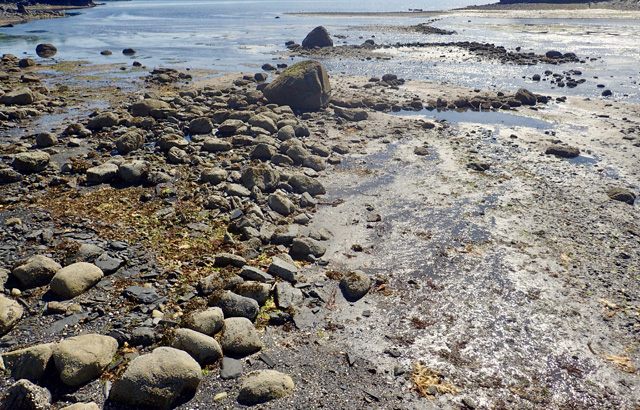Found: A Prehistoric Stone Fish Trap
It’s the first to be found in the Kodiak region.

Hundreds of years ago, on north Kodiak Island in Alaska, native peoples, like pretty much everyone living near water, liked to fish. Their method, though, didn’t involve fishing rods or lures but a large fish trap, made of stone.
The fish trap, which was recently discovered by archaeologists at the Alutiiq Museum, worked pretty simply, and, one presumes, effectively. It consisted of two corrals, each with stone walls that were low enough for salmon to swim over at high tide but high enough to trap them during low tide.
That method of fishing was pretty common across the coast of the North Pacific, Patrick Saltonstall, the archaeologist behind the discovery, said, but before now had not been known to happen as far north as Kodiak, which is 1,000 miles northwest of Seattle and 500 miles west of Juneau.
And while the method is simple, Saltonstall said that operating the fish trap was probably real work.
“I imagine that it was reused year after year and that it was owned by a community or an extended family,” Saltonstall said.
How long ago might the trap have been used? Within the last 2,000 years, archaeologists said, meaning that, for all of the water that’s flown over it since then, it’s aged pretty well.









Follow us on Twitter to get the latest on the world's hidden wonders.
Like us on Facebook to get the latest on the world's hidden wonders.
Follow us on Twitter Like us on Facebook